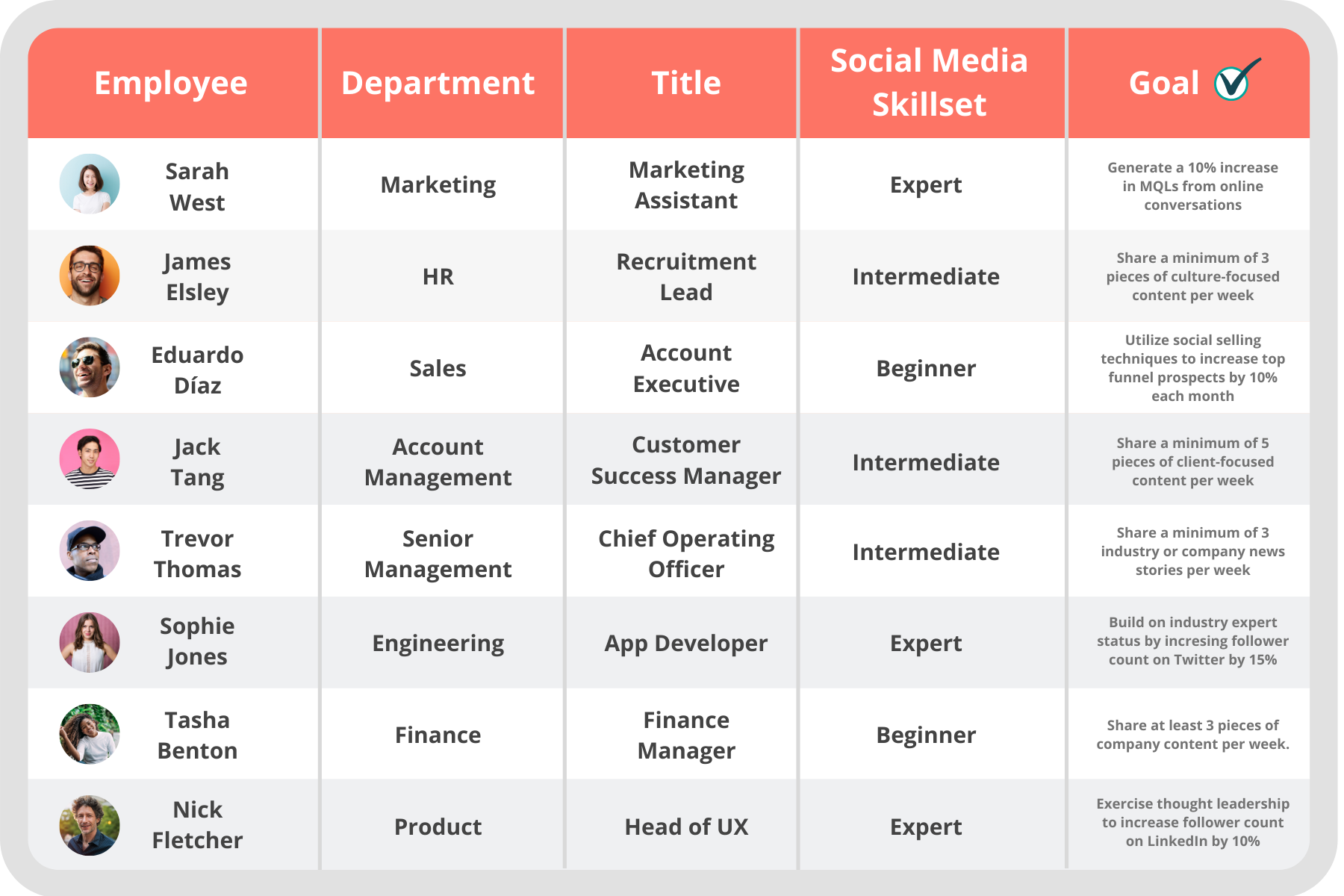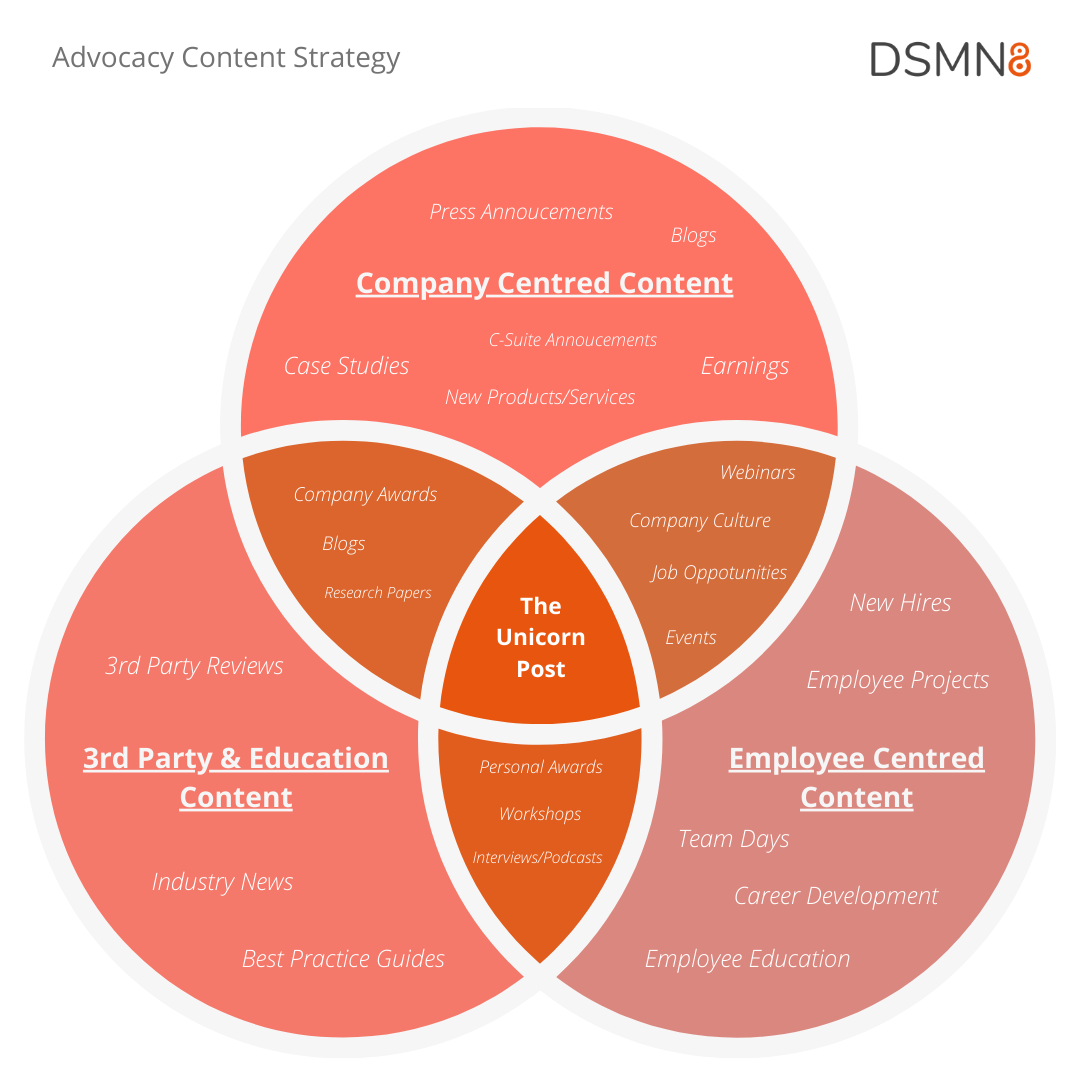
After you’ve fully established an employee advocacy program within your organization, the next step is individual goal setting.
Many marketers express difficulties when attempting to measure the real impact of their content marketing efforts.
This is why it’s essential to set goals from the start, both for the company and individual employees alike.
Every employee advocacy program will be unique.
With different desired outcomes, each program will be need to be tailored to cater to the goals defined from the offset.
And employees will be more inclined to work towards smaller, more personal goals that seem more achievable.
For example, asking an employee in HR to share an additional 3 pieces of company content per week requires minimal effort and is easily achieved.
Individual goals are incredibly straightforward, while still contributing to the company-wide goal of increasing share rates by, say, 30% overall.
Check out our examples below of some goals you might set for your employees, based on department, job title, and skillset on social.
With this in mind, the individual goals you set for your employee advocates will vary depending on their department, role, skill set, and geographical location.
It’s important then to understand that each employee will generate more engagement on certain types of content, depending on their role.
A social media manager who is highly experienced will have different goals to an HR manager who rarely uses Twitter or LinkedIn, for example, because their skill set and audience on social will vary drastically.
No doubt, you will have already realized that certain types of content perform better within particular departments. Certain employees are more likely to interact with certain forms of content, whether that’s a comment, a like, or a share.
Ideally, you want your employees to be able to add a unique POV when they share with their networks.
Relatable and relevant content will be just the ticket in encouraging more authentic sharing.
This authenticity is incredibly important when sharing content on social media, as it can be blatantly obvious to some when an employee is sharing with company-approved text copy, as opposed to adding their own unique take.
Check out our Venn diagram below that clearly shows which employees are better suited to sharing certain pieces of content.
Keep this in mind when setting individual goals.
If your employee advocacy program incorporates gamification features, this will serve as an extra push to get employees working towards achieving their personal goals.
If, like DSMN8, your platform offers your employees the chance to win rewards for their efforts, the friendly competitive nature of winning will have them sharing and working towards their goals without even thinking about it!
Of course, those in departments like sales may already be incentivized by financial kickbacks from commissions, but those in less goal-driven roles may need that extra push.
When it comes to setting goals, it’s common knowledge that the key is to start small. Work towards smaller goals that ultimately contribute to the bigger task at hand.
The same rule applies to your employees: setting individual goals for them that can be easily measured will help them realize the effects and potential of their accumulative efforts.
Getting started with employee advocacy is easier than ever with DSMN8.
We have a team of industry experts who will be able to guide you and your team every step of the way.
Are you ready to unlock the full potential of your employees?
Lewis Gray
Senior Marketing Manager and Employee Advocacy Program Manager at DSMN8. Lewis specialises in content strategy, growing brand visibility and generating inbound leads. His background in Sales lends itself well to demand generation in the B2B niche.




